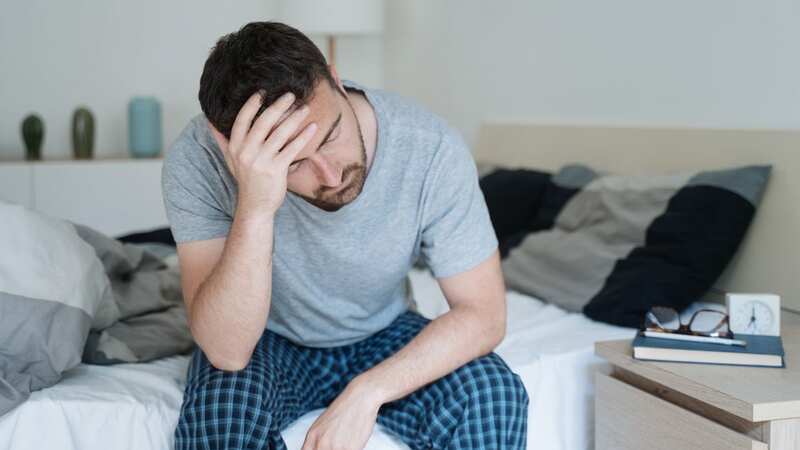

As prostate cancer referrals in England soar to record high, experts have warned Brits about the red flag symptom that can be easily overlooked.
Researchers from King Edward VII’s Hospital have found that 28 percent of men frequently get out of bed at night to have a wee, but only one fifth of those who urinate at least three times are aware that this could signal a problem with their prostate. According to the NHS, prostate cancer does not usually cause any symptoms until the cancer has grown large enough to put pressure on the urethra - the tube that carries urine from the bladder out of the penis.
This encourages frequent urination that often occurs during the night, also known as nocturia. Around 29 percent of those who regularly wee during the night blame the interruption on ‘old age’, while 21 percent put it down to excessive drinking of water before bed. Concerningly, more than half say they suffer from a symptom which could indicate a problem with their prostate, yet around 43 percent would avoid seeing a doctor.
Common prostate cancer symptoms
The NHS has highlighted the full list of common symptoms to watch out for, these include:
Needing to pee more frequently, often during the night
 Breakthrough for prostate cancer as new blood test shows an accuracy rate of 94%
Breakthrough for prostate cancer as new blood test shows an accuracy rate of 94%
Needing to rush to the toilet
Difficulty in starting to pee (hesitancy)
Straining or taking a long time while peeing
Weak flow
Feeling that your bladder has not emptied fully
Dribbling after you finish urinating
Blood in urine or blood in semen
If you are experiencing any symptoms listed above, you should visit a GP as soon as possible. The NHS adds: “It's much more likely to be prostate enlargement, but it's important to rule out cancer.” Prostate Cancer UK warns that around 52,000 Brits are diagnosed with the devastating disease every year, while one man dies from it every 45 minutes.
It is often labelled a ‘silent killer’ as the disease doesn’t present any early symptoms due to the way the cancer grows. If prostate cancer is diagnosed at an early stage, the chances of survival are generally good, but around four in 10 cases are diagnosed at a later stage.
King Edward VII’s Hospital is urging men to visit a doctor if they notice any unusual changes. Caroline Moore, at King Edward VII’s Hospital, said: “We are used to seeing men with a wide range of symptoms that they mind find embarrassing – so there really is nothing that can shock us. It’s important that men who are struggling with an issue with pain, delayed or frequent weeing to see their GP at their earliest convenience.
 Kenny Logan opens up on sex life with wife Gabby after prostate cancer treatment
Kenny Logan opens up on sex life with wife Gabby after prostate cancer treatment
She added: "Most of the time it will be caused by something harmless that can be fixed by a change in lifestyle, such as drinking less alcohol or caffeine. When there is a more serious problem at play, such as an enlarged prostate or cancer, we have a wide variety of diagnostic and treatment tools available, such as a state-of-the-art HoLEP technique which can help manage an enlarged prostate, or focal therapies for prostate cancer, such as High Intensity Focussed Ultrasound (HIFU) or Nano Knife.”
How to reduce your risk of prostate cancer
Prostate cancer is most commonly diagnosed in older men, particularly those over 75 years of age. There is a higher risk for those with a family history and those from an African-Caribbean ethnicity.
However, the Mayo Clinic suggests following a healthy lifestyle can help to lower your risk of the disease. This includes consuming a balanced, low-fat diet, packed with colourful fruits and vegetables.
You might also want to consider restricting your intake of dairy products because some research papers found that men who ate a lot of these foods had the highest risk of prostate cancer.
Where to locate the prostate
According to Medical News Today, the prostate is located between the base of the penis and the rectum, which is the passage that leads to the anus. The prostate sits around two inches inside the rectum.
A person can insert a clean, lubricated finger into the anus, with the finger pointing toward the navel, writes the medical site. The prostate is sensitive to pressure.